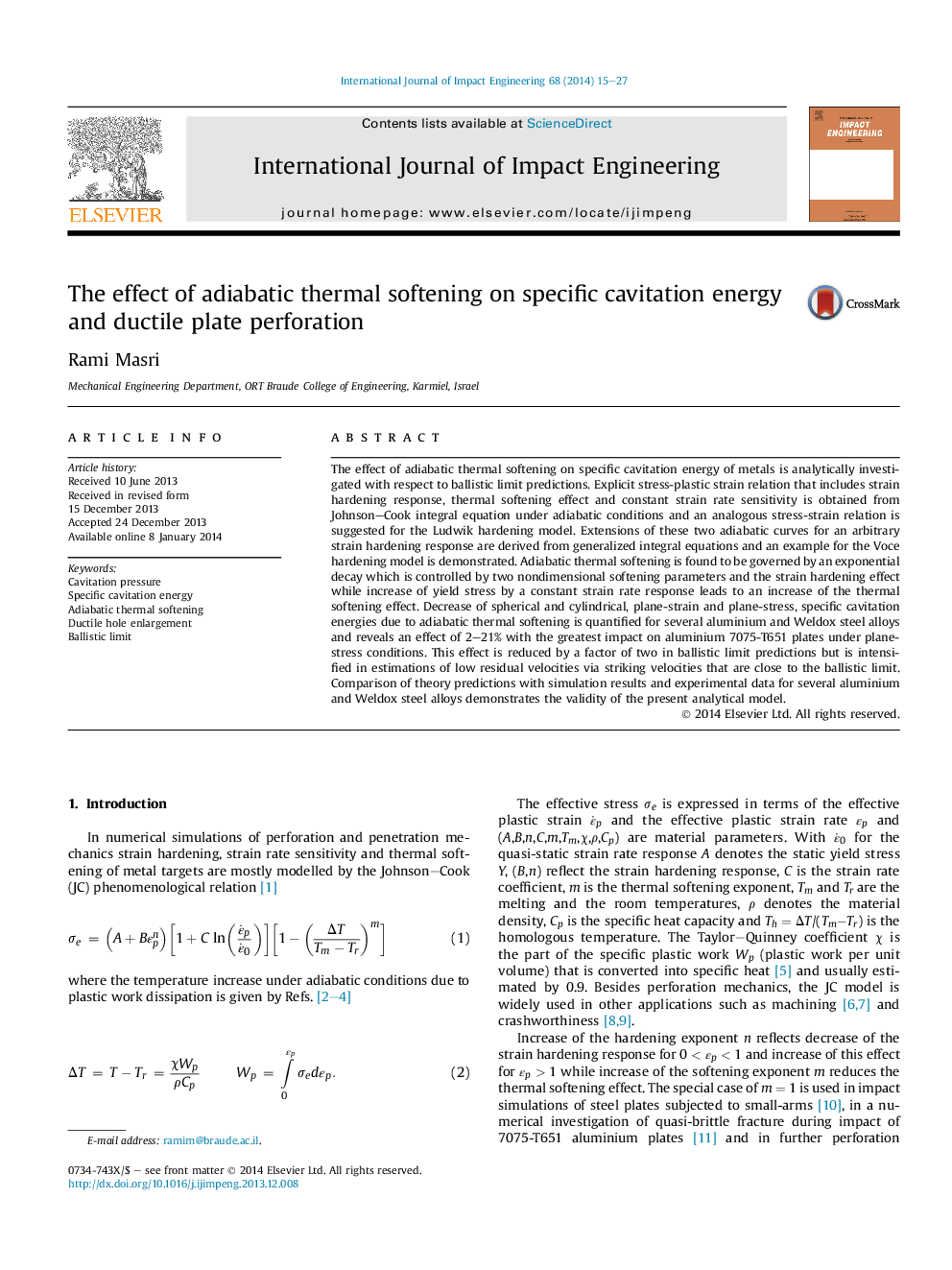| Article ID | Journal | Published Year | Pages | File Type |
|---|---|---|---|---|
| 782949 | International Journal of Impact Engineering | 2014 | 13 Pages |
•The effect of adiabatic thermal softening is investigated analytically.•This effect on specific cavitation energy and ballistic limit is quantified.•Explicit adiabatic stress-plastic strain relation is obtained for Johnson–Cook model.•Analogous adiabatic stress-strain relation is suggested for Ludwik hardening model.•Extensions of these adiabatic curves are derived for an arbitrary strain hardening.
The effect of adiabatic thermal softening on specific cavitation energy of metals is analytically investigated with respect to ballistic limit predictions. Explicit stress-plastic strain relation that includes strain hardening response, thermal softening effect and constant strain rate sensitivity is obtained from Johnson–Cook integral equation under adiabatic conditions and an analogous stress-strain relation is suggested for the Ludwik hardening model. Extensions of these two adiabatic curves for an arbitrary strain hardening response are derived from generalized integral equations and an example for the Voce hardening model is demonstrated. Adiabatic thermal softening is found to be governed by an exponential decay which is controlled by two nondimensional softening parameters and the strain hardening effect while increase of yield stress by a constant strain rate response leads to an increase of the thermal softening effect. Decrease of spherical and cylindrical, plane-strain and plane-stress, specific cavitation energies due to adiabatic thermal softening is quantified for several aluminium and Weldox steel alloys and reveals an effect of 2–21% with the greatest impact on aluminium 7075-T651 plates under plane-stress conditions. This effect is reduced by a factor of two in ballistic limit predictions but is intensified in estimations of low residual velocities via striking velocities that are close to the ballistic limit. Comparison of theory predictions with simulation results and experimental data for several aluminium and Weldox steel alloys demonstrates the validity of the present analytical model.
